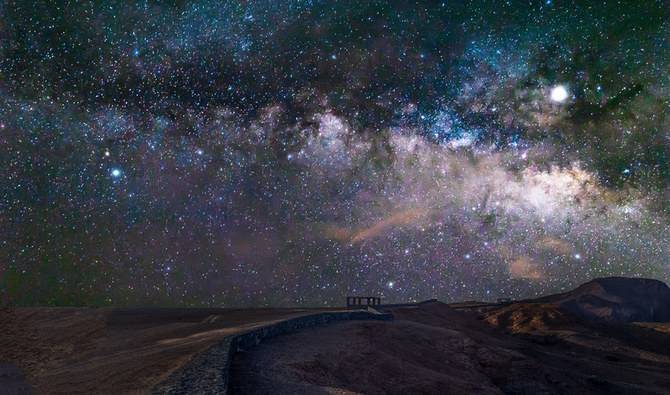The "Small Magellanic Cloud" is a galaxy close to the Milky Way and is known to astronomers. However, new research has found that it hides a secret: it is actually two galaxies, one behind the other. To achieve this discovery, a team led by Claire Murray, an astronomer at the Space Telescope Science Institute in Maryland, tracked the movement of gas clouds and young stars being born within it around the Small Magellanic Cloud, located about 199,000 light-years from Earth.
They found that the small galaxy, which has a width of about 18,900 light-years (or less than one-fifth the width of the Milky Way), contains two distinct star formation regions separated by thousands of light-years. Both the Small Magellanic Cloud and the Large Magellanic Cloud are dwarf galaxies strongly connected by gravity to the Milky Way and are steadily being attracted toward our galaxy, ultimately leading to a collision and merger in the distant future.
While the "Large Magellanic Cloud" has a disk-like shape similar to that of the Milky Way, the "Small Magellanic Cloud" is more irregular. The mass of the Small Magellanic Cloud is one-third that of the larger dwarf galaxy, equivalent to about 7 billion times the mass of the Sun. Although it was previously believed that the Small Magellanic Cloud was composed of multiple components, its features have been somewhat obscured by gas and dust clouds in between the stars, making it challenging to distinguish between these components.
Murray had previously identified that the Small Magellanic Cloud is filled with gas that has been disrupted due to gravitational interactions with the Milky Way and the Large Magellanic Cloud. For the new investigation into the Small Magellanic Cloud, Murray and her colleagues amplified the radio waves emitted from hydrogen gas in the dwarf galaxy using the Australian Square Kilometre Array Pathfinder, which consists of 36 antennas.
The team followed up these observations using the Gaia spacecraft from the European Space Agency (ESA), which is currently building a three-dimensional map of stars in the Milky Way, to track the speed and direction of thousands of younger stars in the Small Magellanic Cloud that are over 10 million years old. By assuming that these young stars move in sync with the large gas clouds from which they were born, the scientists detected two distinct patches of gas and dust where star formation occurs.
The two clouds show different abundances of "metals," meaning elements heavier than hydrogen or helium. One of the clouds appears to be farther from Earth than the other, although the precise separation between them is not yet clear. One of the mysteries scientists hope to solve is whether the two bodies were gravitationally pulled together or if one of them formed from gas that separated from the other through gravitational interactions with the Large Magellanic Cloud.
One piece of evidence supporting the former interpretation is that both clouds appear to have similar masses; thus, if one were separated from the other, it would be reasonable to assume that the "daughter" cloud would be smaller than its predecessor. If the two clouds are not related, this would mean the Small Magellanic Cloud consists of two celestial bodies rather than one. In this case, the Small Magellanic Cloud may need a new name.




